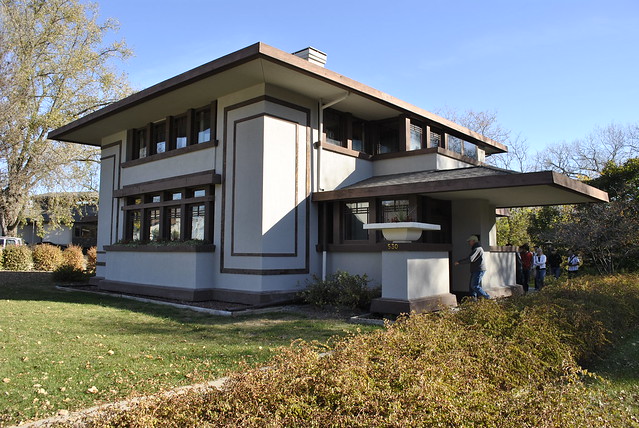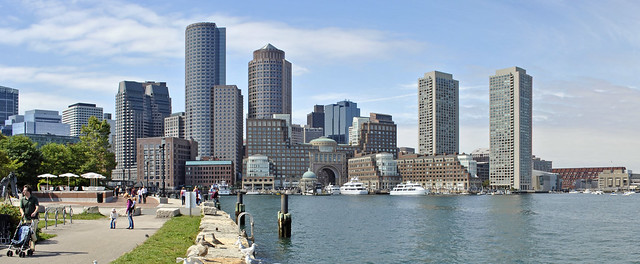

Now in the third week of 5th Year comprehensive studio now, my section has been divided into teams of three and are studying the site and beginning to develop massing studies for the velodrome. I suppose we could refer to this as schematic design. The images above taken from Google Street View show our current project site, viewed from the road bounding it on the north and a panoramic view from across the Charles River to the south. Our site is located in across the road from a residential neighborhood sandwiched between the campuses of Harvard University to the west and MIT to the east. Across the river to the south is the campus and athletic facilities of Boston University.
Everyone seems to approach the design challenge from a different angle. Many have focused on creating a dramatic [curving] form evoking a sense of movement expressive of the velodrome program. Alternatively I am much more interested in context and how the building interacts with its surroundings and the existing urban pattern. I tend toward thinking of buildings as compositions of spaces and pieces that can offer human scale, rather than a singular form. Before pairing up we all developed massing studies individually.
One of my partners created an expressive curving mass with modeling clay, while mine were much more generic and planar, but attempted to respond to the surrounding site conceptually and practically. My model decisions were generally based on [preconceived] notions about how buildings should respond to supposed “urbanism” and how architectural elements can be used purposefully to announce entry and the program within. Shown below are my two models (top two) and my partner’s model at the bottom.

The floor plan shape of my first model draws from the curving form of the Charles River, visible in my previous “Mapping Conversations” diagram. The overall massing of the north facade is flat and rectangular, intended to relate to the street, anticipating urbanism. One corner is cut out, intended to be glazing, to announce the entry. A new open space along to river opens up along the southern curving facade. A pass-through is meant to improve access and encourage connectivity between the river and the residential neighborhood beyond. The separated portion was proposed to house administrative offices and other programs not directly related to the functioning of the velodrome. As I presented this option I quickly began to dismiss it, in favor of my second model. The shape, albeit representational of the river is frankly just awkward and provides no variation or interest in the vertical dimension. However, differentiating the street side versus the river side and the method of announcing entrances and circulation are concepts I carried through to the second iteration.

My second mass model was somewhat of a rejection of the general presumption of a curving form. Wanting to maintain the more regular “urban” edge along the street, I used straight facades and angular shapes all over instead of attempting to incorporate curves. I first embellished the announced entry at the same corner, now with a [glass] prow extending out that would act as architectural signage marking the signature point of arrival and circulation within. I stacked three basswood shapes to represent setbacks in the facade, but not necessarily floor plates throughout the building as it was interpreted. (Obvious a large open space would need to be carved out of the center for the velodrome arena.) The north facade along the street maintains consistent and could house the offices and administration functions on the upper level, providing variation and transparency. The river side is stepped back more, with shifted angles on the top that begins to subtly convey the rotational expression of the velodrome within.
The lowest basswood shape would be the entry level, raised above ground level parking underneath. An exterior terrace on the east end provides a clear entry condition. Vertical circulation (example: stairs or escalator) from the enclosed parking area up to the terrace would direct all spectators (those who arrive by car and those who walk, bike, or take transit) to the same main entrance. Of course there would be additional auxiliary entrances, but I think it’s important to provide the same arrival experience to those driving and those arriving and foot or bike. Not shown in the photos, but existent on the model as presented was a piece of paper representing a new at-grade plazascape along the east side that connects the street [and neighborhood] to the river and accommodates large crowds during events.
A significant critique by my peers was that this form, at least as modeled, is too arbitrary and could easily be any other program. I would agree, but believe a more expressive building form could still be developed without the use of curves.

The last photos are of the curving mass model that my partner created out of clay. It is certainly expressive of the velodrome’s essence of movement and rotation, and begins to consider an entry condition with a ramping platform wrapping around the river side, which he imagined as the “front” and primary entry point.
Our two models appear to be completely contradictory of each other, but it is now our task to attempt to integrate the aesthetic, contextual, and conceptual ideas embodied in each. I expect to concede to a more curved, visually expressive form, but am determined it will be a composition and not a singular form alone. As I realized in my first model, it is challenging to integrate curved and angular forms and avoid an uncomfortable juxtaposition. But additionally, as I investigate our site and its context further, my original notions about an “urban” response may not be appropriate. In fact, opposite of our site (across the street) is a very low, sprawling middle school that hides from the street behind fencing and a dense layer of trees and overgrown vegetation. The road is busier than an urban street but not quite a highway. The most pedestrian-feeling corner is to the northwest and characterized by a filling station with an amusing oversized Shell sign.
How to connect to urban grid of residences blocked by the middle school and the two universities beyond will be a challenge, but a better focus than blind assumptions about a street necessarily being “urban”. Reasonably accommodating 12000 spectators as the project [ridiculously] demands with minimal parking and no immediate transit connection must drive the notion of context that informs an architectural expression that embodies the spirit and essence of competitive cycling.








 A public hearing will be held at the July 27 Cedar Rapids City Council meeting to consider bus route and schedule changes recommended in the recent Cedar Rapids Fixed-Route Transit Analysis. Any interested individuals or groups are encouraged to attend and speak for or against any of the proposed changes. The meeting starts at 5:30pm and is held in the Council Chambers at Hiawatha City Hall.
A public hearing will be held at the July 27 Cedar Rapids City Council meeting to consider bus route and schedule changes recommended in the recent Cedar Rapids Fixed-Route Transit Analysis. Any interested individuals or groups are encouraged to attend and speak for or against any of the proposed changes. The meeting starts at 5:30pm and is held in the Council Chambers at Hiawatha City Hall.